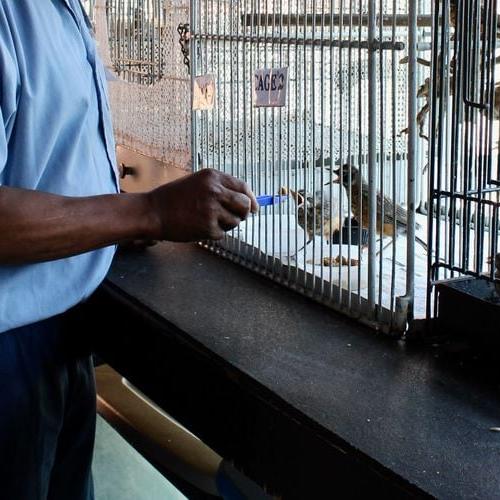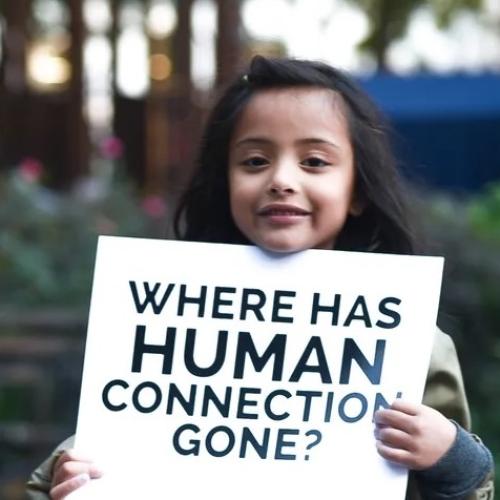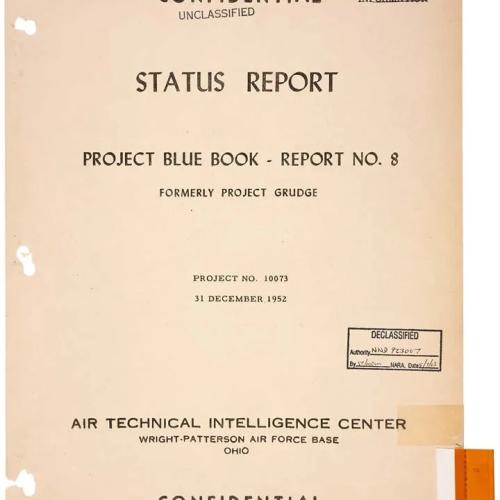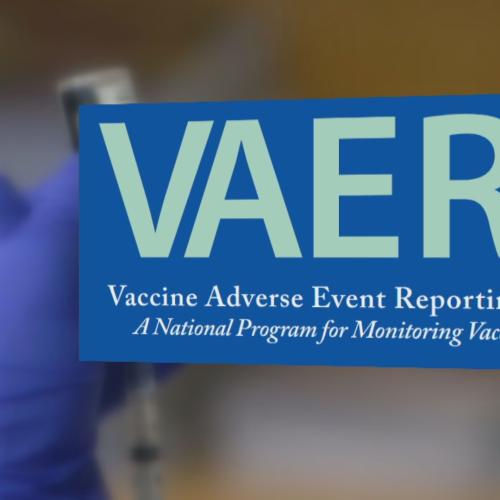Inspiring: Animal Wonders News Articles
Below are key excerpts of inspiring news articles on animal wonders from reliable news media sources. If any link fails to function, a paywall blocks full access, or the article is no longer available, try these digital tools.
For further exploration, delve into our Inspiration Center.
Genius" dogs learn new words after hearing them just four times, a study has found - making them as quick as three year olds. Dogs which have a special talent for remembering verbal cues can rapidly expand their vocabulary simply by playing with their owners, according to the research. Whisky, a four-year-old female Border Collie from Norway, and Vicky Nina, a nine-year-old female Yorkshire terrier from Brazil, were able to fetch the correct toy after being exposed to the object and its name just four times, despite not receiving any formal training. Scientists say these highly intuitive dogs are therefore able to learn new words at the same speed as toddlers aged two and three. To test whether most dogs would be as successful as Whisky and Vicky Nina at learning new words, 20 others were tested in the same way - but none showed any evidence of understanding the new toy names. This confirms that only very few dogs which are especially gifted are able to learn words quickly in the absence of formal training, the scientists concluded. However, the study did reveal that Whisky and Vicky Nina's memory of the new toy names decayed over time due to them only hearing the names a few times.
Note: Explore a treasure trove of concise summaries of incredibly inspiring news articles which will inspire you to make a difference.
Scientists have now documented behaviors like tool use and cooperative hunting strategies among whales. Orcas, or killer whales, have been found to mourn their own dead. Just three years ago, researchers at Mount Sinai School of Medicine in New York discovered, in the brains of a number of whale species, highly specialized neurons that are linked to, among other things, the use of language and were once thought to be the exclusive property of humans and a few other primates. Indeed, marine biologists are now revealing not only the dizzying variety of vocalizations among a number of whale species but also complex societal structures and cultures. Whales, we now know, teach and learn. They scheme. They cooperate, and they grieve. They recognize themselves and their friends. They know and fight back against their enemies. And perhaps most stunningly, given all of our transgressions against them, they may even, in certain circumstances, have learned to trust us. For all of their inherent elusiveness, the gray whales of Baja baffle scientists for the opposite reason: They cant seem to get enough of us humans. The question of why present-day gray-whale mothers, some of whom still bear harpoon scars, would take to seeking us out and gently shepherding their young into our arms is a mystery that now captivates whale researchers and watchers alike. There may be something far more compelling going on in the lagoons of Baja each winter and spring. Something, lets say, along the lines of that time-worn plot conceit behind many a film, in which the peaceable greetings of alien visitors are tragically rebuffed by human fear and ignorance. Except that in this particular rendition, the aliens keep coming back, trying, perhaps, to give us another chance.
Note: For many important reports from reliable sources on the amazing capabilities of marine mammals, as well as serious threats to their well-being and survival from human activities, click here.
We all talk to our dogs, whether it's calling their name, playing fetch or teaching them new tricks. But do they actually understand the words we're saying? Well according to a new study, they do! The research has found that dogs can recognise an average of 89 words or phrases. The study asked 165 owners of different dog breeds to note down words that they thought their dogs responded to. The results showed the most common words the pooches understood were commands like sit, stay and wait. The research was carried out by Catherine Reeve and Sophie Jacques, from the Department of Psychology & Neuroscience, Dalhousie University, in Canada. During the study, dog owners were asked to say if they thought their pup responded to the words or commands they were giving. The owners then had to record if their pet got excited, looked for something, looked up or did an action in response to a command. The research found that 89 words was the average number that the dogs could understand - one clever canine is believed to have understood 215 words in total - but the worst performing pooch knew only 15. Nearly all of the dogs that took part in the study reacted to their own name and many gave a response when being praised. The researchers said: "Those of us who have owned dogs would not be surprised to see most dogs respond with an enthusiastic tail wagging or a treat-seeking response on hearing, good girl/good boy."
Note: Explore a treasure trove of concise summaries of incredibly inspiring news articles which will inspire you to make a difference.
People seem to love nothing more than anthropomorphizing our non-human counterparts in nature. These videos might make us giggle, but what about the creatures that star in them, can they laugh? The answer, according to a new paper studying animals at play, may be yes—to the tune of some 65 species that researchers pegged as “laughing” during bouts of playful activity, reports Mindy Weisberger for Live Science. “This work lays out nicely how a phenomenon once thought to be particularly human turns out to be closely tied to behavior shared with species separated from humans by tens of millions of years,” says Greg Bryant, a cognitive scientist at the University of California, Los Angeles and co-author of the study. Most of the 65 species identified by the study, which was published last month in the journal Bioacoustics, were mammals, such as primates, foxes, killer whales and seals, but three bird species also made the list. For animals, the researchers suggest, a laughing noise may help signal that roughhousing, or other behavior that might seem threatening, is all in good fun. “[Some actions] could be interpreted as aggression. The vocalization kind of helps to signal during that interaction that 'I'm not actually going to bite you in the neck. This is just going to be a mock bite,'” [said] Sarah Winkler ... the paper’s lead author. “It helps the interaction not escalate into real aggression.” Many of the animal laughs identified by the study sound nothing like a human chuckle. For example, Rocky Mountain elk emit a kind of squeal.
Note: Explore a treasure trove of concise summaries of incredibly inspiring news articles which will inspire you to make a difference.
It sounds like a scene from a Spielberg film: an injured worker undergoes an emergency amputation, performed by one of her colleagues, allowing her to live another day. But this is not a human story – it is behaviour seen in ants. While it is not the first time wound care has been seen in ants, scientists say their discovery is the first example of a non-human animal carrying out life-saving amputations. Surprisingly, the insects appear to tailor the treatment they give to the location of injury. “The ants are able to diagnose, to some extent, the wounds and treat them accordingly to maximise the survival of the injured,” said Dr Erik Frank, from the University of Lausanne. Writing in the journal Current Biology, Frank and colleagues report how they cut Florida carpenter ants (Camponotus floridanus) on their right hind limb, then observed the responses of their nest mates for a week. “Nest mates would begin licking the wound before moving up the injured limb with their mouthparts until they reached the trochanter. The nest mates then proceeded to repeatedly bite the injured leg until it was cut off,” the team wrote. By contrast, no amputations were observed for the nine ants with injuries on their tibia, or lower leg. Instead, these ants received only wound care from their nest mates in the form of licking. “It is another example of an adaptation in the lives of social insect workers in which workers help each other to work for their colony and to help their colony,” [Prof Francis Ratnieks at the University of Sussex] said. “Such as when a worker honeybee makes a waggle dance to direct a nest mate to food, or when a worker sacrifices its life in defence of the colony, or here where workers amputate the limbs of an injured or infected worker.”
Note: Explore more positive stories like this about animal wonders.
Bees may soon be able to take some of the sting out of cancer by detecting it early and getting patients into treatment sooner. Honeybees are known for their exquisitely sensitive sense of smell. They don't have noses, but their feet, tongues and antennae are packed with olfactory glands. They can also be quickly trained to do their "waggle dance" when they associate a specific smell with a food source. Taking advantage of these facts, Portuguese scientist Susana Soares has invented a two-chambered glass dome that uses bees to snuff out cancer. "The glass objects have two enclosures: a smaller chamber that serves as the diagnostic space and a bigger chamber where previously trained bees are kept for the short period of time necessary for them to detect general health," Soares wrote on her website. "People exhale into the smaller chamber, and the bees rush into it if they detect on the breath the odor that they were trained to target." Soares said she could train bees in 10 minutes to identify cancer and other diseases, such as tuberculosis and diabetes in their early stages. By exposing the insects to the odor molecules produced by an illness and then feeding them sugar, they learn to associate the smell with a food reward. Soares said that her bee chamber was an inexpensive, sustainable and highly accurate diagnostic tool. And, she points out, bees, as well as wasps, are already used regularly to sniff out land mines and illegal drugs.
Note: Explore a treasure trove of concise summaries of incredibly inspiring news articles which will inspire you to make a difference.
Hundreds of ant species farm fungi today, and studies of ant evolution suggest the adaptation goes back tens of millions of years. Now, scientists have sharpened the picture by bringing in the fungal family tree as well. They pinpoint a date for the origins of the partnership and suggest a surprising catalyst: the asteroid that killed the dinosaurs 66 million years ago. Since ants’ fungal gardens were first described 150 years ago, entomologists have uncovered 247 species of ants that tend them and rely on this fungal crop to survive. Researchers surmise that the ants descend from a common ancestor that later evolved into separate species nurturing different types of fungi. The ant and fungal taxa involved in farming both arose about 66 million years ago, which coincides with the massive asteroid strike that drove nonavian dinosaurs and many other species extinct. That cataclysmic impact produced lingering clouds of debris that shut down photosynthesis across the planet for several months, possibly even years. Researchers suggest ants that had already developed a loose relationship with fungi were ready to take advantage of this newly abundant source of food. For the first few million years, the ants tended fungal species also found in the wild. Then, about 27 million years ago, a subset of ants completely domesticated their fungal cultivars, just as humans have done with most of our staples, which are now remote from their wild roots.
Note: Explore more positive stories like this on animal wonders.
If new evidence emerges of animals’ abilities to feel and process what is going on around them, could that mean they are, in fact, conscious? We now know that bees can count, recognise human faces and learn how to use tools. Prof Lars Chittka of Queen Mary University of London has worked on many of the major studies of bee intelligence. "If bees are that intelligent, maybe they can think and feel something, which are the building blocks of consciousness," he says. Prof Chittka’s experiments showed that bees would modify their behaviour following a traumatic incident and seemed to be able to play, rolling small wooden balls, which he says they appeared to enjoy as an activity. A government review led by Prof Birch in 2021 assessed 300 scientific studies on the sentience of decapods and Cephalopods, which include octopus, squid, and cuttlefish. Prof Birch’s team found that there was strong evidence that these creatures were sentient in that they could experience feelings of pain, pleasure, thirst, hunger, warmth, joy, comfort and excitement. The conclusions led to the government including these creatures into its Animal Welfare (Sentience) Act in 2022. Prof [Kristin] Andrews was among the prime movers of the New York Declaration on Animal Consciousness signed earlier this year, which has so far been signed by 286 researchers. The short four paragraph declaration states that it is “irresponsible” to ignore the possibility of animal consciousness.
Note: Explore more positive stories about animal wonders and the amazing natural world.
One of the world’s most isolated aquatic mammals, Arctocephalus philippii, can tolerate high levels of cadmium, as well as other metallic pollutants, without suffering ill effects. A. philippii is the second smallest species of fur seal and lives only on the Juan Fernández archipelago and one or two nearby islands in the Pacific Ocean, hundreds of miles off the coast of Chile. By the 19th century, the species had disappeared and was believed to be extinct until, in the 1960s, a small colony was found in a cave on the island. Since then, the Juan Fernández seal, which has become a protected species, has slowly recovered and has a population of around 80,000. “We collected samples of their faeces and found they contained extremely high levels of cadmium and other elements such as mercury,” said Constanza Toro-Valdivieso of Cambridge University’s conservation research institute. “The discovery was very surprising,” she said. “Cadmium is poisonous to mammals but somehow these seals were processing it and passing it through their digestive systems and seem to be suffering little harm in the process.” High levels were found not only in its faeces but in the bones of seals that had died of natural causes. The researchers also found high levels of silicon in their bones, which may be offsetting the impact of cadmium, they suggest. “The discovery that these animals appear to tolerate high levels of cadmium in their bodies has important medical implications,” said Toro-Valdivieso. “These animals have a lot to tell us.”
Note: Explore a treasure trove of concise summaries of incredibly inspiring news articles which will inspire you to make a difference.
Ants can be more effective than pesticides at helping farmers produce food, according to new research. They are better at killing pests, reducing plant damage and increasing crop yields, according to the first systematic review of ants’ contributions to crop production. Ants are generalist predators and hunt pests that damage fruits, seeds and leaves, leading to a drop in crop yields. A greater diversity of ants generally provides more protection against a wider range of pests, the study found. The analysis looked at 17 crops, including citrus, mango, apple and soya bean in countries including the US, Australia, the UK and Brazil. “In general, with proper management, ants can be useful pest controls and increase crop yield over time. Some ant species have similar or higher efficacy than pesticides, at lower costs,” researchers wrote in the paper published in Proceedings of Royal Society B. There are more ants than any other insect, making up half of the planet’s insect biomass. There are at least 14,000 known species of ant, with many more likely to remain unknown. Citrus growers in China have used ants in farming for centuries, and the insects have also been used to help control forest pests in Canada, cocoa pests in Ghana and crop pests in Nigeria. Dr Patrick Milligan, from the University of Nevada Pringle Lab ... said the findings were “both heartening and not at all surprising”. He added: “They offer a neat and tidy description of ant-derived benefits that are ubiquitous across ecological and agricultural systems.
Note: Explore a treasure trove of concise summaries of incredibly inspiring news articles which will inspire you to make a difference.
A plump larva the length of a paper clip can survive on the material that makes Styrofoam. The organism, commonly called a “superworm,” could transform the way waste managers dispose of one of the most common components in landfills, researchers said, potentially slowing a mounting garbage crisis that is exacerbating climate change. In a paper released last week in the journal of Microbial Genomics, scientists from the University of Queensland in Brisbane, Australia, showed that the larvae of a darkling beetle, called zophobas morio, can survive solely on polystyrene, commonly called Styrofoam. The findings come amid a flurry of research on ways bacteria and other organisms can consume plastic materials, like Styrofoam and drinking bottles. Now, the researchers will study the enzymes that allow the superworm to digest Styrofoam, as they look to find a way to transform the finding into a commercial product. Industrial adoption offers a tantalizing scenario for waste managers: A natural way to dispose and recycle the Styrofoam trash that accounts for as much as 30 percent of landfill space worldwide. Among plastics, Styrofoam is particularly troublesome. The material is dense and takes up a lot of space, making it expensive to store at waste management facilities, industry experts said. The cups, plates and other materials made from it are also often contaminated with food and drink, making it hard to recycle. Polystyrene fills landfills, where it can often take 500 years to break down.
Note: Explore a treasure trove of concise summaries of incredibly inspiring news articles which will inspire you to make a difference.
A beluga whale has been filmed passing a rugby ball back and forth with crew on a passing boat. The whale was filmed approaching the South African Gemini Craft boat in the Arctic Ocean near the North Pole. A member of the boat's crew threw a rugby ball out the to the whale. The animal grabbed the ball in its mouth before swimming back to the boat. The video has been viewed more than one million times since it was uploaded to Facebook and the footage has spread like wildfire across numerous sites such as Reddit. A number of amazed people have left comments in disbelief of the beluga whale's skills. 'I can't believe what I'm seeing,' one person said. Another one commented: 'How many people can say they've played fetch with a beluga?' The Gemini Crew had earlier been sailing near the Norwegian town of Hammer fest, which recently gained media attention about a possible Russian spy whale swimming in its waters. Russia is understood to have moved a pod of beluga whales to a secret Arctic base before one of the sea creatures reportedly swam to Norway. A beluga was found wearing a harness marked 'equipment of St Petersburg' around the area in April. The sea creature, which had the harness for a camera, was hanging around the port performing tricks for locals in return for food, with many residents joking he had 'defected'. Russia has dismissed claims its 'spy whale' was caught snooping on the fishing vessels of a NATO country.
Note: Don't miss the incredible video of this amazing event. Explore a treasure trove of concise summaries of incredibly inspiring news articles which will inspire you to make a difference.
Koko, the gorilla who mastered sign language and showed the world what great apes can do, has died. She died Tuesday in her sleep at age 46. "Koko touched the lives of millions as an ambassador for all gorillas and an icon for interspecies communication and empathy," the [The Gorilla Foundation] said. The western lowland gorilla was born at the San Francisco Zoo in 1971 and began to learn sign language early in life. Researchers moved her to Stanford in 1974 and established The Gorilla Foundation, a non-profit organization that works to preserve and protect gorillas. Koko and The Gorilla Foundation later moved to the Santa Cruz Mountains. She liked to read and be read to. She purred at parts of books she particularly enjoyed. She was very maternal toward kittens, and has had several throughout her lifetime. Her "tenderness" showed people how loving a gorilla can be, the foundation said. Koko made famous friends like Fred Rogers, who appeared on TV as Mr. Rogers, and Robin Williams. She used her sign language skills to communicate with them. She was said to have understood some 2,000 words of spoken English, and could usually keep up with conversations. Koko appeared in several documentaries and twice on the cover of National Geographic. The first cover featured a photo she'd taken of herself in a mirror. The foundation will continue its work on conservation and preservation of gorillas with continued projects, including a sign language application featuring Koko.
Note: Don't miss touching video of Koko the gorilla available at the link above. Explore a treasure trove of concise summaries of incredibly inspiring news articles which will inspire you to make a difference.
[Humpbacks whales] deliberately interfere with attacking killer whales to help others in distress. They dont just defend their own babies or close relatives. They intervene on behalf of other species - a gray whale calf with its mother, a seal hauled out on an ice floe, even an ocean sunfish. Humpbacks act to improve the welfare of others; the classic definition of altruism. Robert Pitman, a marine ecologist ... describes a pivotal encounter he witnessed in Antarctica in 2009. A group of killer whales washed a Weddell seal they were attacking off an ice floe. A pair of humpbacks ... inserted themselves into the action. One of the huge humpbacks rolled over on its back and the 180-kilogram seal was swept up onto its chest between the whales massive flippers. And when the seal started slipping off, the humpback, according to Pitman, gave the seal a gentle nudge with its flipper, back to the middle of its chest. Moments later, the seal scrambled off and swam to the safety of a nearby ice floe. Pitman started asking people to send him similar accounts. Soon he was poring through observations of 115 encounters between humpbacks and killer whales, recorded over 62 years. So are humpbacks compassionate? When I pose the ... question to Pitman he [responds], When a human protects an imperiled individual of another species, we call it compassion. If a humpback whale does so, we call it instinct. But sometimes the distinction isnt all that clear.
Note: Learn more about the amazing world of marine mammals.
On the Monday following the Orlando massacre, 12 golden retrievers arrived in the Florida city. They had come to offer comfort to some of the victims of the attack, the families of those killed and the emergency medical workers. The animals are part of the K-9 Comfort Dogs team, a program run by the Lutheran Church Charities. Founded in 2008, the team has comforted victims of the 2013 Boston Marathon bombing and the 2012 Sandy Hook shooting. Tim Hetzner, the president of the charity, said that the dogs in Orlando were helping to provide a feeling of safety, allowing those in distress to relax their guard and express their vulnerability during a difficult time. Weve had a lot of people here that start petting the dog, and they break out crying, he said. The dogs and their 20 handlers have visited hospitals and churches, and attended vigils and memorial services. On Wednesday, they visited some of the hospitalized victims. People couldnt get out of their bed, so we had to bring the dog up so they could pet the dog while laying down, Mr. Hetzner said. They start smiling, and in a couple cases, they started talking as much as they could. Comfort dogs ... are often employed by therapists and medical doctors to help soothe patients. Studies have shown that they can help to reduce feelings of anxiety and depression as well as the symptoms of post-traumatic stress disorder. There are more than 120 dogs in the K-9 Comfort Dog unit, in 23 states. All of them have received extensive training similar to that of a service dog.
Note: Explore a treasure trove of concise summaries of incredibly inspiring news articles which will inspire you to make a difference.
A man in Whittier has gone the distance for a tiny hummingbird his once-feral dog helped rescue. As Ed Gernon explains, last year he adopted a German shepherd mix named Rex, that at the time fought other dogs and killed cats. He was dangerous, said Gernon of Rex. He was an animal that had learned to live on the streets and to survive on his own. One afternoon just a month after Rexs adoption, the dog became the rescuer, saving a very tiny and sick hummingbird. And he suddenly stopped and he would not move, he recalls. I mean its tiny and its dead as far as Im concerned. Its covered in ants. Its got no feathers. But thats not where the story ends. Hummer as she is called is now living in Gernons home a year later. But its been a long road. In fact, Gernon had to nurse Hummer back to health (quite literally). He feeds her a special formula every 15 minutes from sun up to sun down and even taught her how to fly using a hair dryer. You find yourself doing stuff you never thought in a million years you would do, he said. And even Rex is willing to share his water bowl with Hummer. It was this little creature. This fragile creature that the whole world wanted to kill and he was trying to protect her so I thought Id go the distance, said Gernon. Its been more than a year since Hummer arrived and Gernon knows eventually she will spread her wings. Its time for her to start mating and I keep leaving the doors and windows open thinking shell leave, he said. But while shes here, he says her little wings have made a big impact.
Note: Don't miss the inspiring video of this amazing love story at the link above. Explore a treasure trove of concise summaries of incredibly inspiring news articles which will inspire you to make a difference.
Known as the 'Crocodile Man', Costa Rican animal lover Chito swims, plays and even feeds Pocho the giant crocodile in what is one of the world's most unlikely friendships. 'This is a very dangerous routine but Pocho is my friend and we have a good relationship,' says 52-year-old Chito. 'He will look me in the eye and he does not attack me. It is too dangerous for anyone else to come in the water. It is only ever the two of us.' The bizarre friendship began nearly 20 years ago when Chito rescued the 980-pound crocodile after finding him close to death ... shot in the left eye by a cattle farmer after preying on a herd of cows. Chito enlisted the help of several friends to load the massive reptile into his boat. Naming him 'Pocho' (meaning strength), the fisherman says he healed the reptile with medicine, food, and, more importantly, lots of care and attention. 'When I found him in the river after he was dying so I put him in my boat and I brought him into my house,' recalls Chito. 'He was very skinny, weighing only around 150 pounds, so I gave him chicken and fish and medicine for six months to help him recover.' During the recovery process, Chito stayed by Pocho's side, even sleeping with him at night. 'I just wanted him to feel that someone loved him, that not all humans are bad,' Chito says.
Note: Don't miss the great photos at the article link above.
Every month, a new cycle of training begins with yet another class of veterans in a program run by the northern Florida K9s for Warriors. The seven-year-old nonprofit is one of dozens of private organizations that offer psychiatric service dogs to address the military's mental health crisis. The numbers are startling on veteran suicides, and this is working, said Rory Diamond, a former federal prosecutor who quit to become chief executive of K9s for Warriors. A recent [Purdue University] study ... used standard questionnaires to assess PTSD symptoms and other aspects of mental health among 141 K9s for Warriors applicants, half teamed with a service dog and half on a wait list. Those with dogs showed significantly lower levels of post-traumatic stress, depression and social isolation, with higher levels of psychological well-being. Dogs have provided services to humans for millennia, often as hunting and herding partners. But not until World War I were they systematically trained to assist people with disabilities, as guides for the blind. Service dogs now prompt deaf people when a doorbell rings, retrieve pills for people in wheelchairs and alert people with diabetes to blood sugar spikes. Psychiatric service dogs [blend the missions of] of task-oriented service canines and animals seen as providing emotional support. While the dogs paired with veterans with PTSD are commonly trained to wake them from nightmares ... advocates also laud their ability to soothe a panicking vet and provide companionship.
Note: Explore a treasure trove of concise summaries of incredibly inspiring news articles which will inspire you to make a difference.
New research reveals that orcas are able to imitate human speech, in some cases at the first attempt, saying words such as hello, one, two and bye bye. The creatures are already known for their ability to copy the movements of other orcas, with some reports suggesting they can also mimic the sounds of bottlenose dolphins and sea lions. We wanted to see how flexible a killer whale can be in copying sounds, said [study co-author] Josep Call. We thought what would be really convincing is to present them with something that is not in their repertoire and in this case hello [is] not what a killer whale would say. Only a fraction of the animal kingdom can mimic human speech, with brain pathways and vocal apparatus both thought to determine whether it is possible. That is what makes it even more impressive even though the morphology [of orcas] is so different, they can still produce a sound that comes close to what another species, in this case us, can produce, said Call. Wikie, a 14-year-old female orca ... had previously been trained to copy actions performed by another orca when given a human gesture. After first brushing up Wikies grasp of the copy command, she was ... exposed to five orca sounds she had never heard before. Finally, Wikie was exposed to a human making three of the orca sounds, as well as six human sounds. Wikie was often quickly able to copy the sounds, whether from an orca or a human, with all of the novel noises mimicked within 17 trials.
Note: Learn more about the amazing world of marine mammals.
Animals are to be formally recognised as sentient beings in UK law for the first time, in a victory for animal welfare campaigners, as the government set out a suite of animal welfare measures including halting most live animal exports and banning the import of hunting trophies. The reforms will be introduced through a series of bills, including an animal sentience bill, and will cover farm animals and pets in the UK, and include protections for animals abroad, through bans on ivory and shark fins, and a potential ban on foie gras. Some of the measures – including microchipping cats and stopping people keeping primates as pets – have been several years in preparation, and others – such as the restriction of live animal exports – have been the subject of decades-long campaigns. George Eustice, the environment secretary, said: “We are a nation of animal lovers and were the first country in the world to pass animal welfare laws. Our action plan for animal welfare will deliver on our manifesto commitment to ban the export of live animal exports for slaughter and fattening, prohibit keeping primates as pets, and bring in new laws to tackle puppy smuggling.”
Note: Explore a treasure trove of concise summaries of incredibly inspiring news articles which will inspire you to make a difference.
Important Note: Explore our full index to revealing excerpts of key major media news articles on several dozen engaging topics. And don't miss amazing excerpts from 20 of the most revealing news articles ever published.
























































































